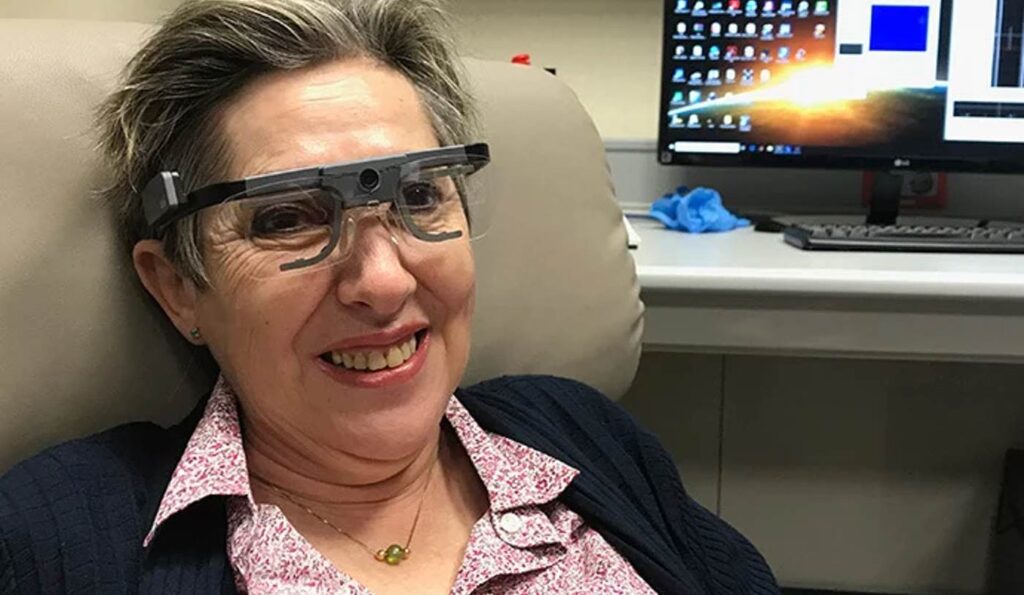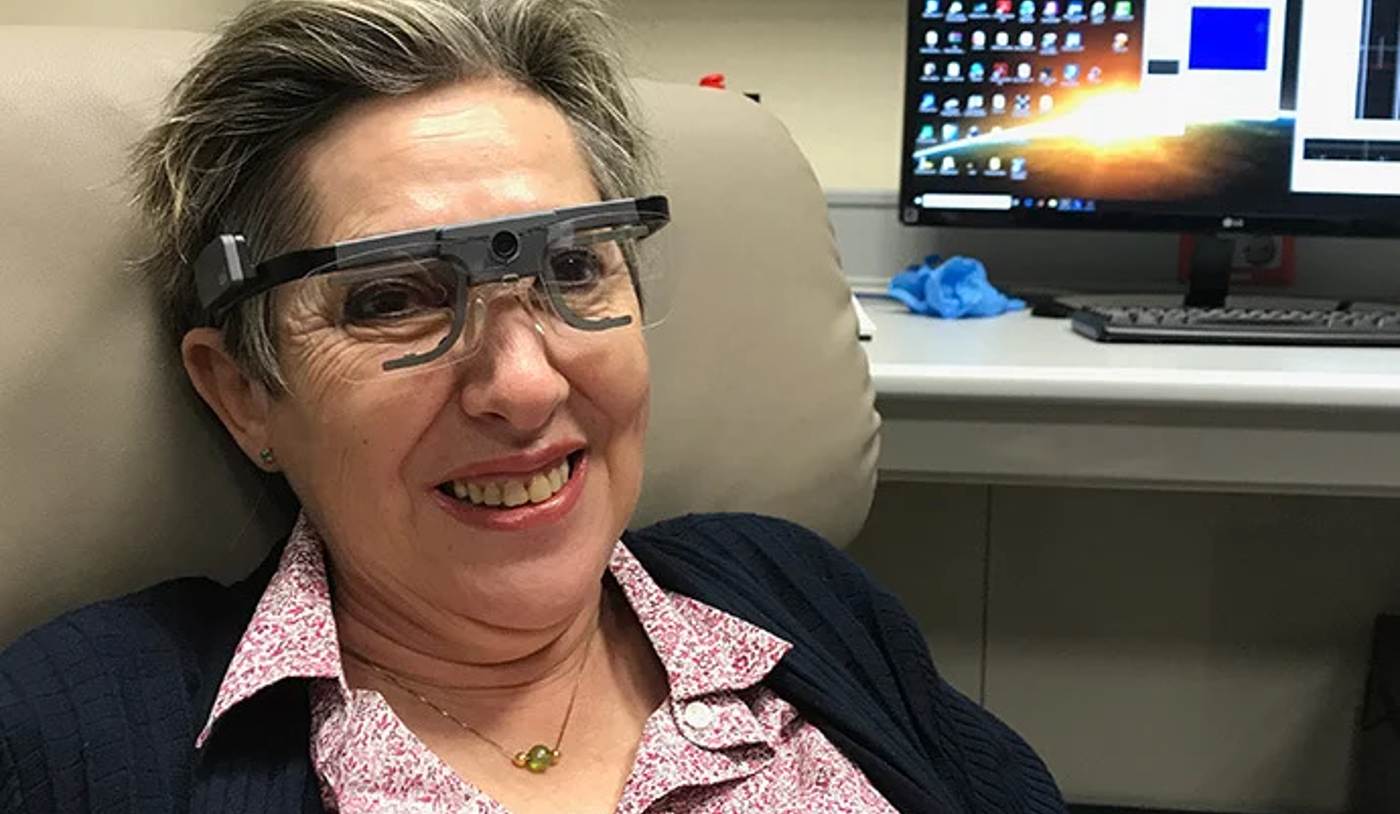
A “long-held dream” of science was realized when a team of researchers from Spain and Utah coordinated to restore basic vision to a blind women by connecting a camera to an array of microchips to her brain.
Sightless for 16 years, 57-year-old Berna Gomez was able to identify letters and the edges of objects, as well as play basic video games, and was so instrumental in proving both safety and efficacy of the treatment that the scientists named her a co-author in the corresponding paper.
If vision could be bypassed by technology, it would represent one of the largest developments in the history of prosthesis, potentially restoring the sight of 148 million blind people worldwide.
Rather than one’s eyes observing the environment, a camera would map the information onto the visual cortex. The camera was (it’s still early days) duct-taped to a pair of glasses, and a microchip with 96 electrodes was implanted through a procedure called a minicraniotomy. After, and during a 6-month series of experiments in Spain, Gomez was able to differentiate between the letters “I” and “L” as well as “O” and “C.”
“These results are very exciting because they demonstrate both safety and efficacy,” said one of the lead researchers, Eduardo Fernández of Miguel Hernández University, in a statement.
RELATED: Honda is Designing an Ingenious In-Shoe Navigation System For The Visually Impaired
Blindness is the tenth-most common disability worldwide. Some macular generation like glaucoma can be reversed using stem cells. But for trauma of the eye or optic nerve, a prosthesis is the only chance. Scientists have so far used small retinal implants, including artificial cornea, but a camera-cortical-implant combo would represent a simpler option.
“One goal of this research is to give a blind person more mobility,” said Dr. Richard Normann Ph.D. one of the study leads. “It could allow them to identify a person, doorways, or cars easily. It could increase independence and safety. That’s what we’re working toward.”
The electrode array stimulated neurons to produce phosphenes which in turn produced white points of light in Gomez’ vision.
A critical feature of the breakthrough—published in The Journal of Clinical Investigation—was the complete lack of observed side-effects of sticking a microchip on a part of the human brain, which was not found to interfere at all with normal functioning of the neurons in the cortex.
MORE: CRISPR Gene-Editing Experiment Partly Restores Vision In Legally Blind Patients
She was able to play a small video game, in which the baby character from The Simpsons, Maggie Simpson, appears for a moment with a gun in either her left or right hand, disappearing shortly after and leaving Gomez to press a button regarding which hand held the firearm. Gomez observed the offending infant correctly almost every time.
“We have taken a significant step forward, showing the potential of these types of devices to restore functional vision for people who have lost their vision,” Hernandez said.
GIVE an Eyeful of This Hopeful Research to Friends…




















